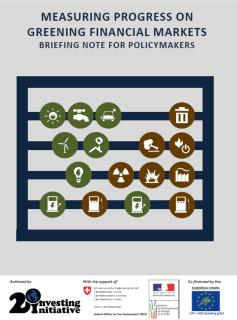
In the context of the G20 Green Finance Study Group, one of the key questions focuses on the challenge of measuring progress around mobilizing capital for ‘green’ investments and shifting capital out of ‘brown’ investments. Stock markets are a limited source of direct financing for ‘green’ activities. Attempts to measure ‘green’ finance have thus been largely limited to measuring indirect ‘green’ exposure to products and activities. Green’ share estimates are point-in-time snapshots and don’t track companies’ investments. An alternative approach measures forward-looking indicators.
Bonds are a diverse asset class. Meaningful estimates of the ‘green’ share of the bond universe can only meaningfully be applied to corporate, project, municipal, and project bonds. There are no meaningful estimates around the share of ‘green’ in private equity, given the lack of transparency within the asset class more generally. Estimates are largely limited to the venture capital space. Similar to private equity, there is no meaningful, comprehensive review of green finance for lending. Exceptions are estimates in some developing countries (notably China) and some development bank reporting.
This briefing note provides a state-of-the-art review on measuring progress on green finance, with a particular emphasis on ‘climate-friendly’ finance. This section briefly reviews what we know about ‘green’ finance across asset classes, with a particular emphasis on questions around high-carbon and low-carbon finance. The next section maps the current options for benchmarking climate finance, as one aspect of the green finance space, to public policy objectives. The note concludes with mapping options for actions for policymakers and international agencies, notably the G20.
